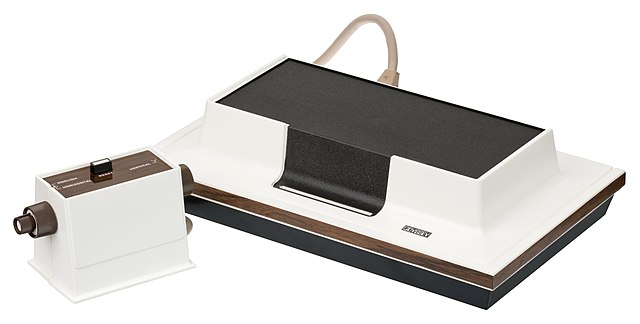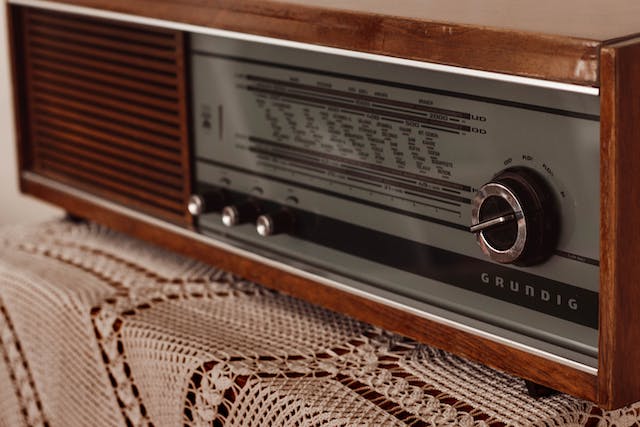The 1970s was a stellar period for television, as many manufacturers tried to push the boundaries of color TV in order to produce better reception and clearer resolution. Besides the television, computers also had a significant advancement in the 70s, and it is mainly due to the release of one particular personal computer that we will talk about in this article. Without further ado, here is a timeline on the technological achievements of computers, radios, and televisions in the 1970s.
1970
The first year of the 1970s was the time where the Sony Trinitron, a line of aperture-grille-based CRT TVs, became quite popular in households around the United States. The Trinitron was first announced in 1968, and in that year, it has also already received a lot of praise because of its ability to produce brighter images and clearer colors for flesh tones on the screen. Furthermore, the line became one of Sony’s bestsellers until the 1990s.
It was also in 1970 when Douglas Engelbart, a prolific American engineer who has invented several programs and parts for computers, has received a patent for his new invention, which was the computer mouse.
1971
During the early months of 1971, NBC started abandoning their famous “color peacock” logo, as they deemed it “redundant.” It is important to note that NBC utilized the color peacock in the late 60s to signify that what the viewer will be watching is in color. However, since all of the shows or programs broadcasted on NBC were already in color, there was no need to show the color peacock before every show. But, in 1979, the company would revive the color peacock as their primary logo.
Portable cassette tape records were quite popular in 1971, as it allows listeners to record audio coming from the radio into a cassette tape, and this function enables them to create their own mixtape that contains their favorite songs.
In the computer industry, it was in 1971 when Intel introduced the world’s first microprocessor called the 4004. The 4004 allows computers to be downsized as processors in the past were much bigger than the Intel microchip.
1972

The world of video game consoles would often regard 1972 as the “genesis” of its industry, as it during that year that the Magnavox Odyssey was released. The Magnavox Odyssey is considered to be the first home video game console, and it would help other game companies realize the potential of manufacturing game consoles that are smaller than arcade cabinets and can be played at home.
1973
In 1973, Xerox PARC (Palo Alto Research Center) released the Alto, which was the first computer that was designed to accompany or support an OS (operating system) based on a graphical user interface. The Xerox Alto would later be the inspiration behind some of the most iconic computers in the history of technology.
The music industry received a boost in sound design and clarity when the four-channel quad audio, also known as the quadraphonic sound, was introduced. The quadraphonic sound allows four sound channels to become separate, which adds layers to the music or produce a surround sound for a movie. By the end of 1973, most recordings and radio broadcasts would utilize the four-channel quad audio.
1974
The Universal Product Code (UPC) was arguably the most important creation in 1974, as it allowed systematic pricing and tracking for products in grocery stores and other establishments around the world. The first-ever UPC scanned in 1974 was in a pack of Wrigley’s chewing gum that was sold at the Marsh Supermarket located in Troy, Ohio.
Intel also had a steady rise in production and innovation since the release of the 4004 microprocessor in 1971, and for 1974, its newest 8008 microprocessor served as the inspiration behind the Mark-8 microcomputer that was designed by Jonathan Titus.
1975
Inspired by the Mark-8, the Micro Instrumentation and Telemetry Systems (MITS) company released the Altair 8800 in 1975, and its launch marked the beginning of the microcomputer era. When the Altair 8800 was released in January 1975, software developer Bill Gates and researcher Paul Allen formed a company called Microsoft in April. The goal of Microsoft during its early years was to program and sell BASIC interpreter systems for the Altair 8800, but they would later branch out to develop software for other companies and computers.
In the same year, Sony launched a new cassette format called the Betamax. The Betamax would then continue to revolutionize the industry of video playback and recording. However, a year later, another cassette format called the VHS was released, and this format dominated the video market in the 80s and the 90s.
It was also in 1975 when Atari released the Home Pong console through an exclusive deal with Sears, a popular chain of department stores in the United States. The first units of the Home Pong console were branded with the “Tele-Games” name, which was a brand created by Sears for their home consoles. To know more, you can check out the Top Pop Culture Toys of the 70s.
1976
As mentioned previously, it was in 1976 when the VHS (Video Home System) was released by the Victor Company of Japan (JVC). The VHS was first released in Japan on September 9, 1976, and it would then be launched in the US on August 23, 1977.
On April 1, 1976, two computer hobbyists named Steve Wozniak and Steve Jobs founded the Apple Computer Company. Before the founding of the company, Wozniak started developing the company’s first desktop computer called the Apple I around the same year, and it was then released on April 11, 1976.
1977
In the cable television industry, Warner Communications began implementing a new service called Qube, which was a multi-programmed cable system that paved the way for other companies to air pay-per-view shows and special televised events.
The Commodore PET, a line of personal computers manufactured by Commodore International, was launched in January of 1977. The said line serves as the predecessor for Commodore’s most successful PC, the Commodore 64. The Commodore 64 is most notable for selling over 17 million units, making it the highest-selling computer model of all time.
1978
It was in 1978 when FM radio started having an equal number of listeners to AM radio, and in the following years, FM radio will dominate the radio industry. In addition, the L-cassette tape, otherwise known as the large cassette, was released around the same year. The larger size of the cassette is said to improve sound quality, but it never became popular amongst consumers, who are already used to buying or having standard cassette tapes.
The year 1978 was also the founding years for the Advanced Mobile Phone Service, Inc. or AMPS, a subsidiary of AT&T. The business ventures of the said subsidiary led to the development of the cell phone.
1979
By 1979, FM radio has finally overtaken AM radio for the most number of listeners in the US, and it was the first time in the history of radio that FM radio became more popular than its rival.
On March 1, 1979, Philips demonstrated a prototype of the optical digital audio discs during a press conference that they organized in the Netherlands. The prototype would become the inspiration behind the invention of the compact disc (CD) that was co-developed by Sony and Philips in 1982.



